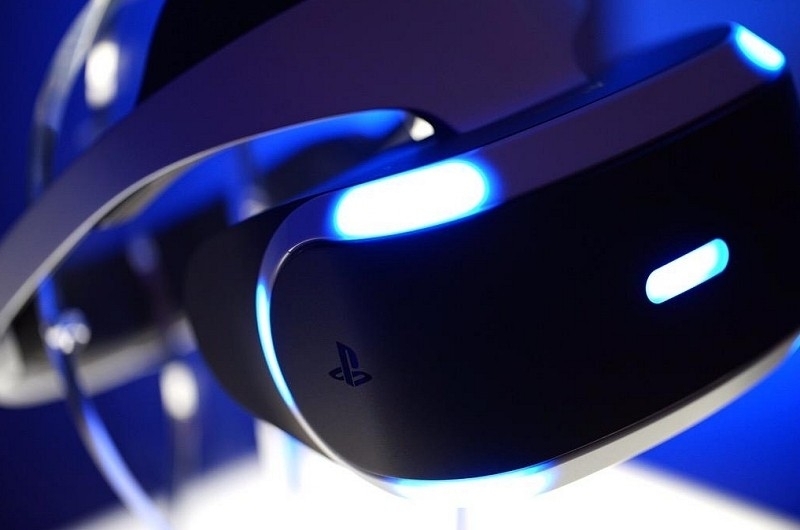The first day of the Game Developers Conference this year began with something unusual–dense crowds. Normally the opening days are lighter, with various summits and tutorials, and most attendees swarm the show on the final three days for the sessions and the Expo along with other events. What’s different about this year? The Virtual Reality Developers Conference, which is being held the first two days of GDC.
In fact, the VRDC has proven to be so immensely popular with attendees that it’s being moved for Tuesday from Moscone West to Moscone North, purely because the rooms are twice as large and thus hundreds of people won’t be left standing outside sessions. “In response to overwhelming demand for VRDC, we are moving Tuesday’s program to rooms with double the capacity,” said the official notice from GDC. Is there interest in VR from game developers? Absolutely.
The presence of VR at GDC in general can’t be ignored or overlooked. In this year where VR is finally getting into the hands of consumers in large numbers, there are dozens of VR games with a formal or informal presence at GDC. A short walk around the show and you can see plenty of Gear VR units in use, and long lines to try out the VR experiences on display. It’s easy to believe there are hundreds of VR games in development, and it seems that this level of investment and effort should yield a good market, although that may take time.
Meanwhile, there was plenty of activity and excitement in more established realms of gaming–specifically in mobile games, where Google had its full Google Developer Day, announcing a number of new tools and services for Android game developers. Important announcements included tools for managing virtual goods and currencies, as well as the launch of a Video Recording API. This will bring game streaming to Android games with a much greater ease of use by building it right into the mobile OS (rather than needing an external app), as well as making it easy to share videos to YouTube. These features may not seem all that important to game play, but they are absolutely critical to marketing. Streaming games has propelled billions of dollars in revenue across game sales and eSports, and the primacy of YouTube videos for propelling game sales is undisputed–just look at the billions of minutes of Minecraft videos viewed every month.
The most important part of Google’s announcements, though, is the new ad type: “Search Trial Run Ads.” These new ads, scheduled to be available in a few weeks, will allows players to try out a game for 10 minutes directly from the mobile search results page. No installation is necessary because the game is streamed; after the 10-minute trial, the player is prompted to install the game from Google Play (which, of course, may involve paying for the game at that point). Because of the difficulties involved with streaming such data, though, the feature will only be available when you are connected through Wi-Fi, rather than through your cell connection.
That’s not all the good news for mobile game marketers, though. Google’s making portrait videos available for ads, which is a big deal. According to Google, more than 80 percent of video ad views in mobile apps on the Google Display Network are from devices held vertically. If your ad is constructed this way, users won’t have to re-orient their device. “We’ve seen significant improvement in both click-through and conversion rates from game developers using Portrait Video, resulting in much lower cost per install and a larger number of downloads,” said Google’s blog post.
Google’s also adding additional controls to let marketers target high-quality users with Active User Targeting for Games, which again will be rolled out in a few weeks. “This new type of targeting for Android apps can show ads to users who have spent more than 30 minutes playing games, or who have played a Google Play Games integrated game in the last 30 days,” noted Google. “Game developers can show their ads to game lovers, and combined with other types of targeting, such as a particular game category (e.g., Adventure), they can reach a very precise audience.”
Finally, Google is stepping up another part of its advertising toolbox with AdMob Mediation, where developers can easily monetize apps with rewarded video ads from a number of ad providers in AdMob Mediation. “Supported networks and platforms include AdColony, AppLovin, Chartboost, Fyber, Upsight, and Vungle, with more being added all the time,” said Google. “So if you’re a developer monetizing with these providers, you can easily manage and optimize them through the AdMob interface.”
Google’s also working to help indie developers, adding a new Indie Corner to Google Play. According to Google, the intent of this new area is to showcase “amazing games built by indie developers.” This is not automatic, though – indie developers will have to submit games to Google for approval to be put into the Indie Corner, and Google will be careful to select only games they consider “awesome.” Still, any additional opportunity that can help your game get discovered is something that will be welcomed by indie developers.
What criteria will Google be using to allow developers into the Indie Corner? “It has to be a relatively small company,” Google Play spokesperson Joshua Cruz told GamesBeat. “We think 11 to 15 employees — something along those lines. And then it’s the type of game. Is trying to do something creative or different stylistically.” Unusually for Google, the process will be moderated by people, not by an algorithm. “Ultimately, it’s going to be assessed by humans,” said Cruz. “They’ll make the call.” It will be interesting to see what games make the cut, and how much this new Indie Corner ends up helping small developers find an audience. Certainly, they can use whatever help they can get.

